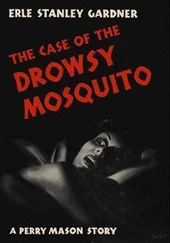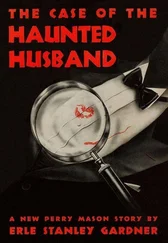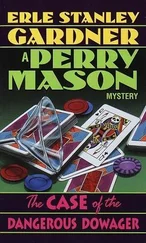Daniel Gardner - The Science of Fear
Здесь есть возможность читать онлайн «Daniel Gardner - The Science of Fear» весь текст электронной книги совершенно бесплатно (целиком полную версию без сокращений). В некоторых случаях можно слушать аудио, скачать через торрент в формате fb2 и присутствует краткое содержание. ISBN: , Издательство: Penguin Group (USA) Incorporated, Жанр: Психология, Политика, Прочая научная литература, на английском языке. Описание произведения, (предисловие) а так же отзывы посетителей доступны на портале библиотеки ЛибКат.
- Название:The Science of Fear
- Автор:
- Издательство:Penguin Group (USA) Incorporated
- Жанр:
- Год:неизвестен
- ISBN:9780525950622
- Рейтинг книги:3 / 5. Голосов: 1
-
Избранное:Добавить в избранное
- Отзывы:
-
Ваша оценка:
- 60
- 1
- 2
- 3
- 4
- 5
The Science of Fear: краткое содержание, описание и аннотация
Предлагаем к чтению аннотацию, описание, краткое содержание или предисловие (зависит от того, что написал сам автор книги «The Science of Fear»). Если вы не нашли необходимую информацию о книге — напишите в комментариях, мы постараемся отыскать её.
The Science of Fear — читать онлайн бесплатно полную книгу (весь текст) целиком
Ниже представлен текст книги, разбитый по страницам. Система сохранения места последней прочитанной страницы, позволяет с удобством читать онлайн бесплатно книгу «The Science of Fear», без необходимости каждый раз заново искать на чём Вы остановились. Поставьте закладку, и сможете в любой момент перейти на страницу, на которой закончили чтение.
Интервал:
Закладка:
I certainly don’t want to suggest all scary prognostications are wrong. Horrible things do happen, and it’s sometimes possible—very difficult but possible—for smart, informed people to foresee them. Each scary prognostication has to be taken on its merits. But anyone rattled by catastrophist writing should also know that many of the horrible and wonderful things that come to pass are not predicted and there is a very long history of smart, informed people foreseeing disasters—they tend to focus on the negative side of things, for some reason—that never come to pass.
In 1967—a year we remember for the Summer of Love and Sergeant Pepper’s Lonely Hearts Club Band —Americans got a remarkably precise warning of pending catastrophe. It would strike in 1975, they were told, and the world would never be the same. Famine—1975! by brothers William and Paul Paddock may be thoroughly forgotten today, but it was a best seller in 1967. The brothers had solid credentials. One was an agronomist, the other an experienced foreign service officer. The book is loaded with scientific research, studies, and data from around the world—everything from postwar Mexican wheat production to Russian economic output. And the Paddocks came to a brutal conclusion: As a result of soaring populations, the world was rapidly running out of food. Massive, worldwide starvation was coming, and there was nothing anyone could do to stop it. “Catastrophe is foredoomed,” they wrote. “The famines are inevitable.”
The Paddocks were not cranks. There were countless experts who agreed with them. Harvard biologist George Wald predicted that absent emergency measures “civilization will end within fifteen or thirty years.” The loudest alarm was raised by Stanford University biologist Paul Ehrlich. “The battle to feed all of humanity is over,” Ehrlich wrote in The Population Bomb , published in 1968. “In the 1970s and 1980s, hundreds of millions of people will starve to death in spite of any crash programs embarked upon now.”
Like the Paddocks, Ehrlich loaded his book with research, studies and statistics. He also wrote three different scenarios for the unfolding of future events in heavily dramatic style—a technique that would become common in the catastrophist genre and one that, as we have seen, is very likely to trigger the Rule of Typical Things and lead Gut to believe the predicted events are more likely than reason would suggest. “Even with rationing, a lot of Americans are going to starve unless this climate change reverses,” a frustrated scientist says to his wife in the first scenario. “We’ve seen the trends clearly since the early 1970s, but nobody believed it would happen here, even after the 1976 Latin American famine and the Indian Dissolution. Almost a billion human beings starved to death in the last decade, and we managed to keep the lid on by a combination of good luck and brute force.” That scenario ends with the United States launching a preemptive nuclear strike on the U.S.S.R. In the second scenario, poverty, starvation, and crowded populations allow a virus to emerge from Africa and sweep the world—one-third of the planet’s population dies. In the third scenario, the United States realizes the error of its ways and supports the creation of world bodies that tax rich countries to pay for radical population control measures—one billion people still die of starvation in the 1980s, but population growth slows and humanity survives. Ehrlich writes that this last scenario is probably far too optimistic because “it involves a maturity of outlook and behavior in the United States that seems unlikely to develop in the near future.”
In 1970, Ehrlich celebrated the first Earth Day with an essay that narrowed the range of possibilities considerably: Between 1980 and 1989, roughly four billion people, including 65 million Americans, would starve in what he dubbed the “Great Die-Off.”
The Population Bomb was a huge best seller. Ehrlich became a celebrity, making countless appearances in the media, including The Tonight Show with Johnny Carson. Awareness of the threat spread and mass starvation became a standard theme in popular culture. In the 1973 movie Soylent Green , the swollen populations of the future are fed rations of a mysterious processed food called “Soylent Green”—and as we learn in the memorable final line, “Soylent Green is people!”
Governments did not embark on the emergency measures to control population advocated by Ehrlich and many others. And yet mass starvation never came, for two reasons. First, fertility rates declined and the population did not grow as rapidly as predicted. Second, food production soared. Many experts had said these outcomes were not only unlikely, they were impossible. But they both happened, and forty years after the publication of Famine—1975! , the world’s population was better fed and longer lived than ever.
One would think catastrophists would learn to be humble about their ability to predict the future, but there is a noticeable absence of humility in the genre. In 1999, James Howard Kunstler wrote at great length about the disasters—including an economic recession as bad as the Great Depression of the 1930s—that would follow the breakdown of computers afflicted by the Y2K bug. Five years later, he published The Long Emergency , which is filled with great certainty about all manner of horrors to come. As for Paul Ehrlich, he has been repeating essentially the same arguments he made in The Population Bomb for forty years. On the dust jacket of The Upside of Down , a 2006 book by University of Toronto professor Thomas Homer-Dixon that follows similar themes, there is a blurb from Ehrlich. The book is highly recommended, he writes, for its “insightful ideas about how to make society more resilient in the face of near-inevitable environmental and social catastrophes.” Apparently the only thing Ehrlich has learned from the past four decades is to put the word “near” in front of the word “inevitable.”
To be fair to Homer-Dixon, his book is nowhere near as alarmist as Ehrlich’s writing, or some of the others in the catastrophist genre, although that’s how the marketing makes it look. In books, as in so much else, fear sells. Anyone stocking up on canned goods and shotgun shells because they’ve read some prediction of pending doom should keep that in mind. When Martin Rees wrote a book on threats emerging from scientific advances, he entitled it Our Final Century? But Rees’s British publishers didn’t find that quite frightening enough, so they dropped the question mark. Rees’s American publishers still weren’t satisfied and they changed “century” to “hour.”
In an interview, Rees is much less gloomy than his marketing. He says we should worry more about nuclear weapons than we do and work harder for disarmament; given that these weapons are actually designed to cause catastrophe, it’s hard not to agree. But Rees also thinks it important to acknowledge the astonishing bounty science has heaped upon us. “We are safer than ever before,” he says. We worry far too much about “very small risks like carcinogens in food, the risk of train accidents and things like that. We are unduly risk averse and public policy is very risk averse for those minor matters.”
A balanced perspective is vital, Rees says. There are real threats that should concern us—threats like nuclear weapons—but we also have to appreciate that “for most people in the world, there’s never been a better time to be alive.”
Proof of this fundamental truth can be found in countless statistics and reports. Or we can simply spend an afternoon reading the monuments to our good fortune erected in every Victorian cemetery.
Читать дальшеИнтервал:
Закладка:
Похожие книги на «The Science of Fear»
Представляем Вашему вниманию похожие книги на «The Science of Fear» списком для выбора. Мы отобрали схожую по названию и смыслу литературу в надежде предоставить читателям больше вариантов отыскать новые, интересные, ещё непрочитанные произведения.
Обсуждение, отзывы о книге «The Science of Fear» и просто собственные мнения читателей. Оставьте ваши комментарии, напишите, что Вы думаете о произведении, его смысле или главных героях. Укажите что конкретно понравилось, а что нет, и почему Вы так считаете.












